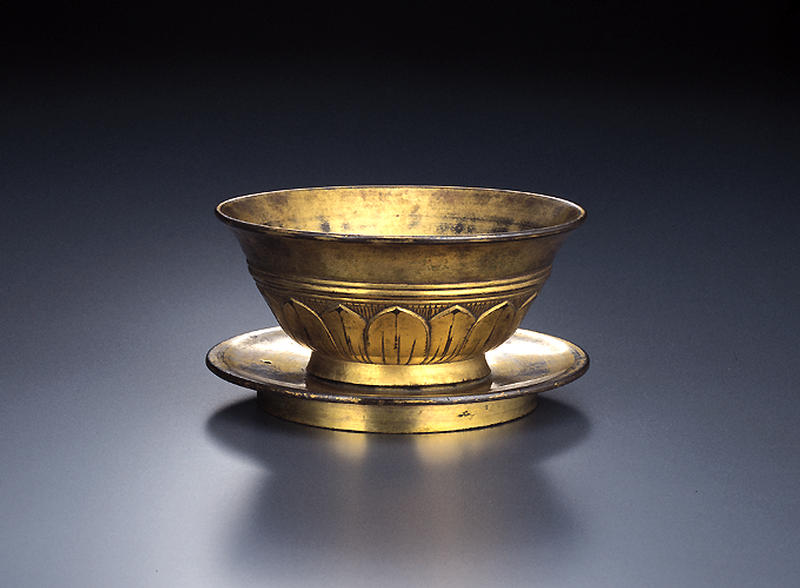Rokki Bowl and Saucer
- Late Heian period
- 12c
- Gilt bronze
- H-4 D-8
- Formerly in the collection of Ishida Mosaku
Catalogue Entry
Rokki
Late Heian period, 12th century
Gilt bronze
Height, 4.0cm; mouth diameter, 8.1cm
Zukoki
Late Heian period, 12th century
Gilt bronze
Height, 7.3cm; mouth diameter, 9.6cm
Shasuiki
Late Heian period, 12th century
Gilt bronze
Height, 10.4cm; mouth diameter, 11.8cm
Shasuiki Lidded Bowl
Zukoki Lidded Bowl
Catalogue Entry
In Japanese Esoteric Buddhist temples, a large altar is placed before the central enshrined image, and the various ritual implements used in Esoteric Buddhist rites are placed on this altar. A seat for the priest is placed before this altar, with shelves and furnishings flanking this priest's seat. The ritual implements placed on the altar include symbolic objects derived from Indian weapons, such as the vajra staff, vajra bell, sacred wheel and katsuma, used to purify the spirits of the Buddhist practitioners, and the ritual implements used in the offerings of incense, flowers, light, and food and drink to the Buddha, such as the incense burner, rokki bowls, food bowls, and flower vases. Among these implements, the rokki, or six small bowls with accompanying saucers, are placed three on either side of the central incense burner, and water, incense, and flower offerings are placed within these bowls. Here the rokki is banded by a 3‐stripe band around its midsection, and an 8‐petal lotus blossom motif surrounds the base which connects to the short foot. A saucer accompanies the bowl. This bowl was made of thinly cast bronze which was then wheel‐trimmed and its surface covered with bright gilding. The carefully formed lotus petal leaves with their slight outward turn are fully indicative of the detailed elegance preferred in the late Heian period.
